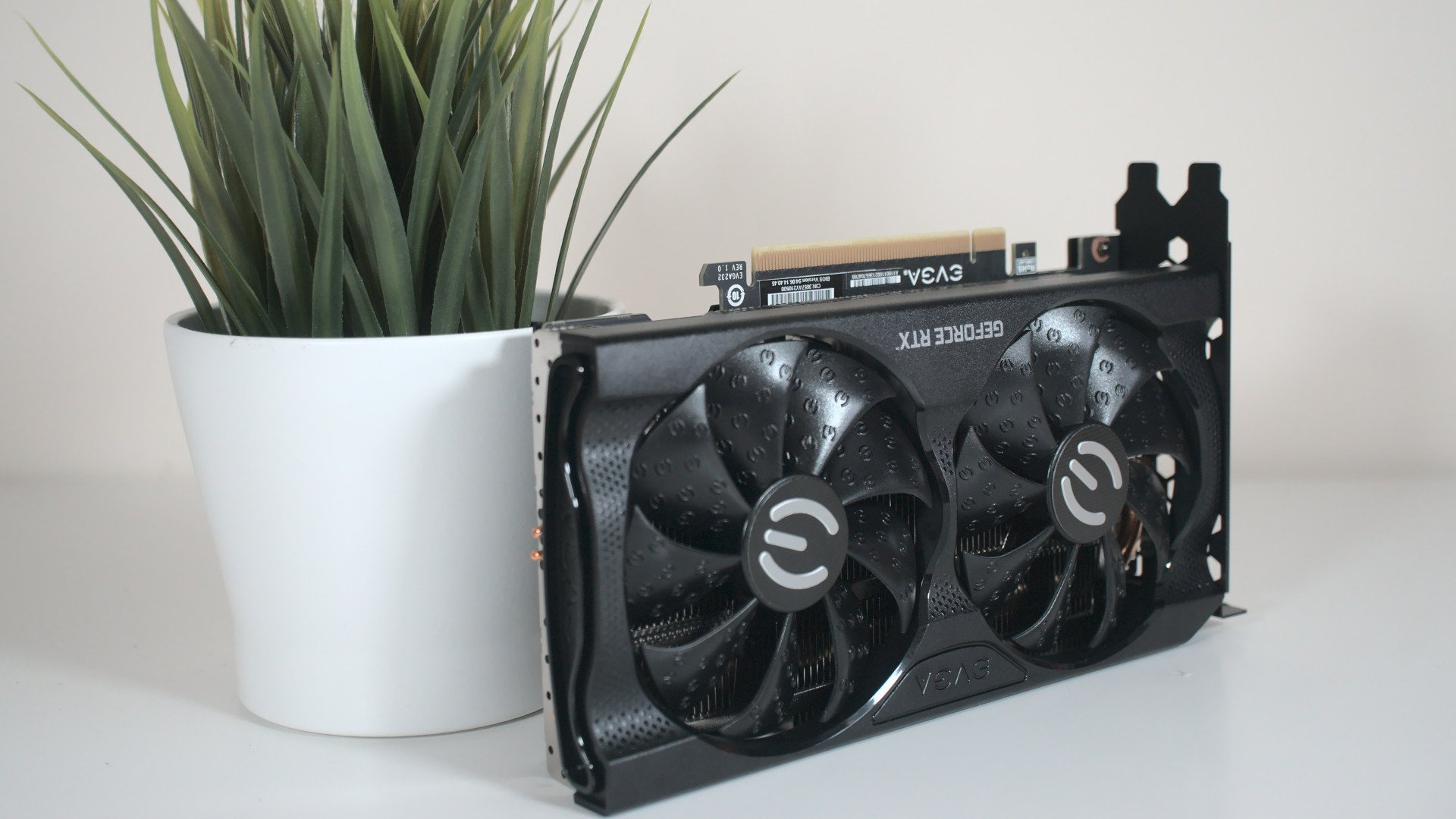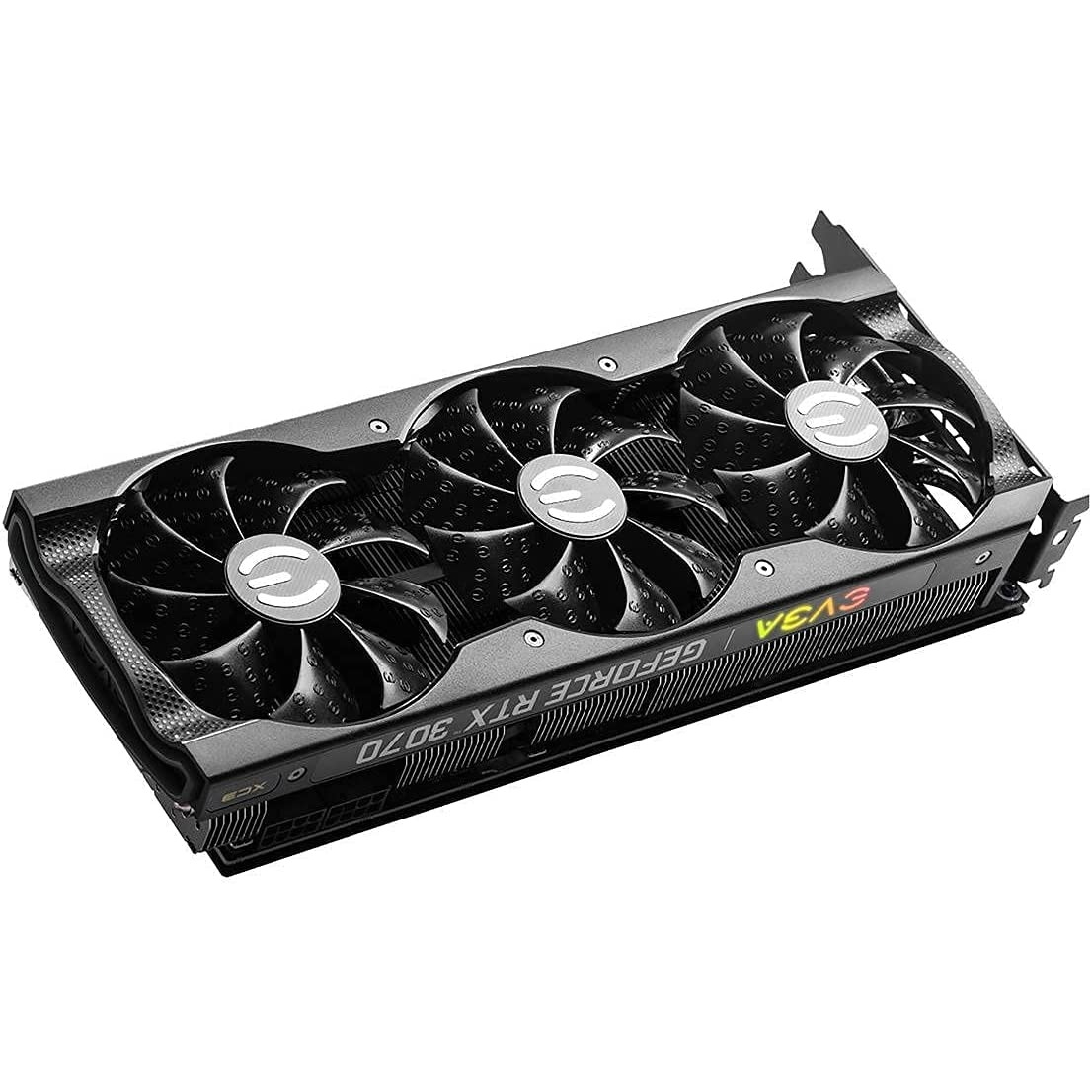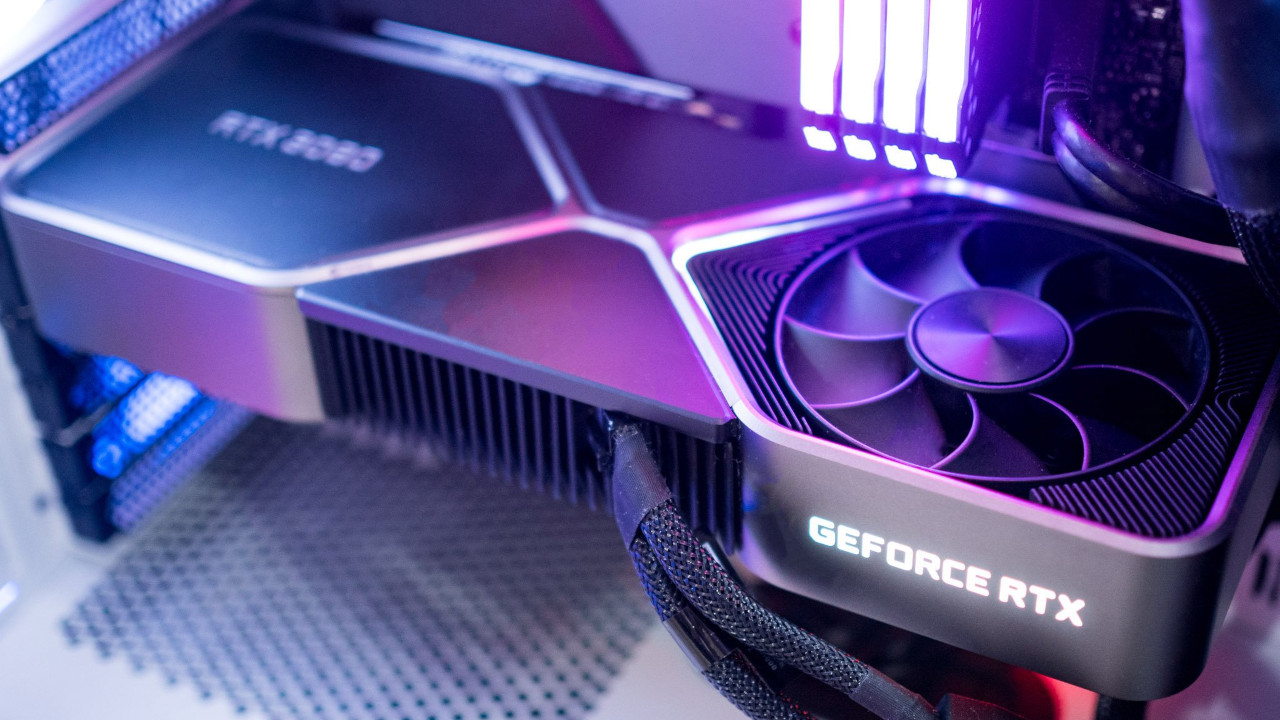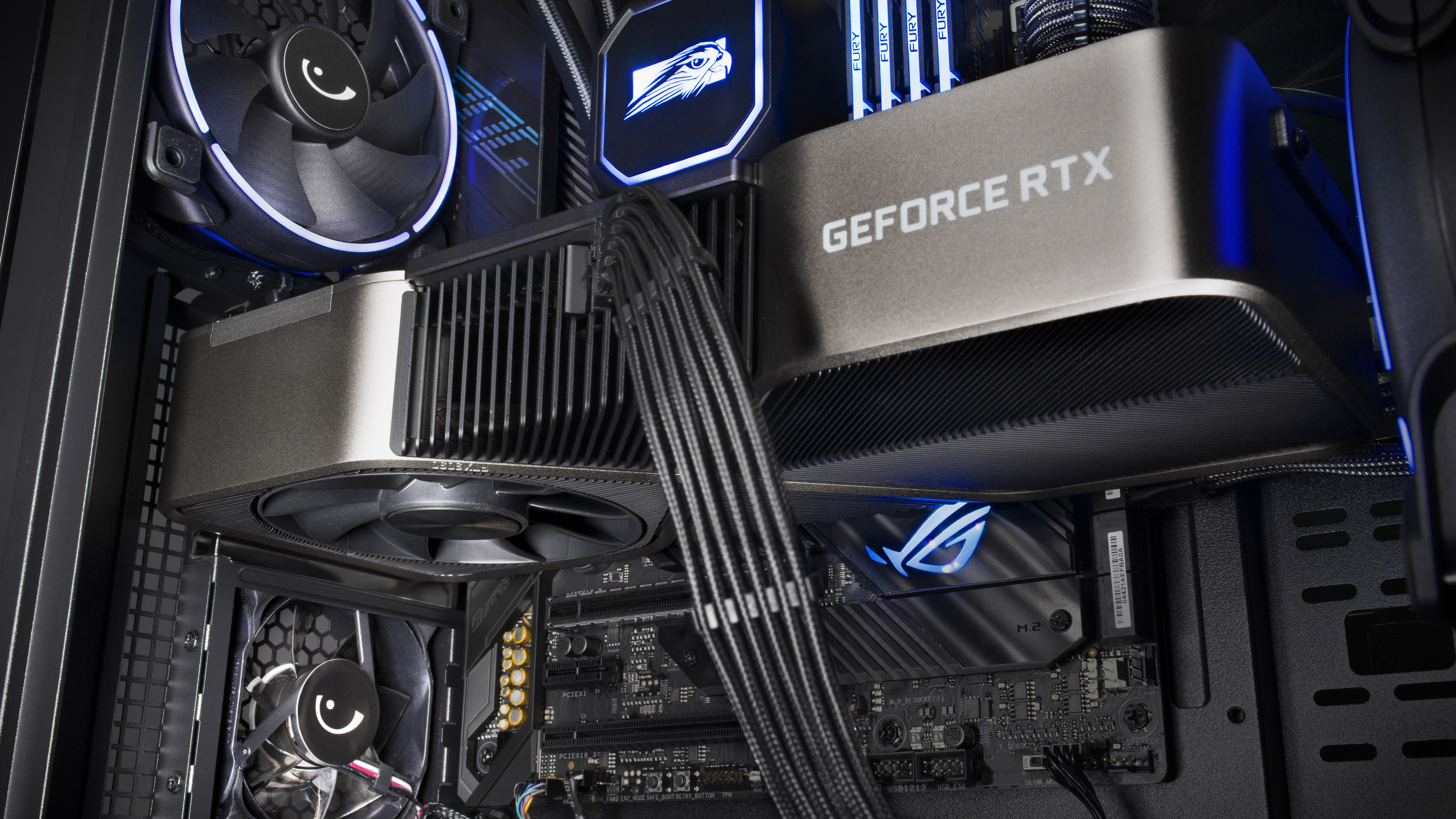Nvidia spills the tea on EVGA rift, China export controls
"EVGA has other plans," Nvidia simply stated.

What you need to know
- Nvidia CEO claimed that EVGA was ready to exit the market and pursue other plans, and the conversation seems to be amicable despite recent reports.
- Subtly addressing EVGA grievances, Nvidia claimed that its business decisions were made to help AIB partners and shield them from price increases and losses in an uncertain market.
- Nvidia stated that recent export restrictions made by the United States government over GPU technology export to China would not play a major impact on its business, given that it could apply for an export license on a case-by-case basis if needed.
- Nvidia supports free and fair trade and the protection of national security interests.
Two recent controversies placed Nvidia in the limelight recently. And though Nvidia didn't generate those headlines themselves, the company found it in the crosshairs of two of the world's largest economies over trade and national security issues, along with a recent rift with partner EVGA. CEO Jensen Huang took an opportunity to address members of the media about these big issues and gave insights into Nvidia's business following the GPU Technology Conference (GTC) keynote that saw the unveiling of the high-end GeForce RTX 4090 desktop graphics.
In short, Nvidia believes that neither issue to affect its GPU business, and that the company's investment in software and hardware will help it weather the immediate storm.
"EVGA has other plans"

Addressing EVGA's decision to sever ties with Nvidia, CEO Jensen Huang claimed that it was the former's decision.
"[EVGA CEO] Andrew [Han] wanted to wind down the business and and he's wanted to do that for a couple of years," Huang explained of the recent headline-making news.
From Nvidia's statements, the relationship appears solid, and there weren't any points of contention in that partnership.
"Andrew and EVGA are great partners, and I'm sad to see them leave the market," Huang continued. "But but you know, he's got other plans that he's been thinking about it for several years. And so that's about it."
When pressed, Huang quickly pivoted to the fact that the GPU market is growing and will be served well after EVGA's exit.
Get the Windows Central Newsletter
All the latest news, reviews, and guides for Windows and Xbox diehards.
"The market has a lot of great player and it'll be served well after EVGA, but I'll always miss them," Huang added. "I'll always miss them, and they were they were an important part of our history. And Andrew was a great friend, and I think that it was just time for him to go do something else."
GPU partners were shielded from price increases

Subtly addressing the reported grievances that partner EVGA had that led to the rift, Nvidia said that its business decisions were made to essentially shield AIB (add-in board) partners from price increases and having to do the hard work of securing components. We had previously reported that EVGA's CEO Andrew Han explained his decision to severe ties with Nvidia and won't release any RTX 4000 series GPUs because the company felt left out of the loop with architectural developments. Huang had a different explanation that counter what Han was feeling at EVGA.
"The AIBs don't have to hardly place lead time on us," Huang explained, noting that Nvidia was shouldering much of the burden on procuring components and absorbing costs. "And so you know, we ordered we ordered the components no matter what, so our AIBs are are agile. And and we carried the vast majority the inventory when the market was really hot. Our selling price was all exactly the same, never moved $1. Our component costs kept going up, but we absorbed all of the increases. And we passed $0 on to the market."
To elaborate on the situation, Nvidia stated that there were extended lead times to placing a purchase order on a wafer during the pandemic, and it went from 16 weeks to more than a year and a half to get the wafters to make the GPU chips. But that was just the wafers, and there were other components involved, ranging from substrates to voltage regulators and other parts.
These supply challenges forced Nvidia's business decision to order a lot of inventory in advance to meet the growing demands for GPU, which accelerated during the pandemic. However, when the market slowed down, the company maintained its commitment to AIBs and absorbed the losses as it wrote down inventory, Huang said.
"When when the demand slowed, we we took the action to create marketing programs, but basically discount programs or rebate programs, that allowed the pricing in the market to come back to to to a price point that that we felt would ultimately sell through," Huang explained. "And so the combination of the commitments that we made, which led [Nvidia] to write down about a billion dollars worth of inventory. And then secondarily, we put a few hundred million dollars into marketing programs to help the channel reset its price. I think between these two actions that we took a few months ago, we should be in a good good spot in Q4 as Ada, Ada ramps hard. And so so I'm looking forward to that. And those those decisions were really really painful, but they were necessary."
Nvidia's response to trade restrictions with China

CEO Jensen Huang spent a sizable portion of his hour-long session fielding press questions about recent trade restrictions that the United States government has placed on GPU exports to China over concerns about national security. For now, Nvidia doesn't see a significant impact on those restrictions, and it expects to be able to comply with government restrictions while still being able to satisfy the demands of the Chinese market.
"Our expectation is that for United States and also for China, we will have a large number of products that are architecturally compatible, that are within the the limits that requires no licensing at all," Huang said of Nvidia's plans for GPU shipments to China.
The CEO continued on to explain that the trade restrictions apply to a very small subset of accelerated computing products that Nvidia makes.
"The restrictions specifies a particular combination of computing capability and interchip interconnects," he elaborated. "And, this specifies that very clearly, within that specification, under the envelope, that specification is a large space for customers. And in fact, the vast majority of our customers are not affected by the specification."
If a GPU partner wants to exceed the limitations of the restrictions, a license could be obtained for specific purposes.
"And so you could surmise that that the goal is not to to reduce or hamper our business," Huang said of the government rules. "The goal is to know who it is that that would need capabilities of this limit and give the United States [government] the opportunity to make a decision about whether that level of technology should be available to others."
In response to a separate question regarding fair trade, innovation, and national security, Huang acknowledges that each component has a role in Nvidia's business.
"Well, first of all, there needs to be fair trade," he said. "That's questionable. There needs to be national security. That's always a concern. And there are a lot of things that maybe somebody knows that we don't know. However, nothing could be absolute. And so they just had to be degrees of it. You can't have completely open unfair trade. You can't have completely unfettered access to technology without concern for national security. But you can't have no trade. And you can't have no business. And so, so I think it's just a matter of degrees."
In terms of how the rules implemented by the United States government affects Nvidia's business with China, Huang claimed that there are still plenty of opportunities.
"The limitations and the licensing restrictions that we're affected by gives us plenty of room to continue to conduct business in China with with our partners, gives us plenty of room to to innovate and continue to serve our customers there," Huang noted. "And in the in the event that that the most extreme examples and use of our technology is needed, we can go seek a license. And so from my perspective, the restriction is no different than any other technology restriction than it has been, has been placed on export control."
The reason why Nvidia had to disclose the ruling and its compliance is because the announcement of export controls happened in the middle of the quarter, and that could have a potential impact on the business. Essentially, it was a disclosure to investors, but Huang said that these restrictions are no different than existing ones in the CPU space and that smaller rivals may not have to make similar disclosures because accelerated computing wasn't a significant part of their business.
"So I think from that perspective, I'm not at all concerned," Huang concluded.
In part of the same media session, Nvidia also declared that Moore's Law is dead.
Chuong's passion for gadgets began with the humble PDA. Since then, he has covered a range of consumer and enterprise devices, raning from smartphones to tablets, laptops to desktops and everything in between for publications like Pocketnow, Digital Trends, Wareable, Paste Magazine, and TechRadar in the past before joining the awesome team at Windows Central. Based in the San Francisco Bay Area, when not working, he likes exploring the diverse and eclectic food scene, taking short jaunts to wine country, soaking in the sun along California's coast, consuming news, and finding new hiking trails.

